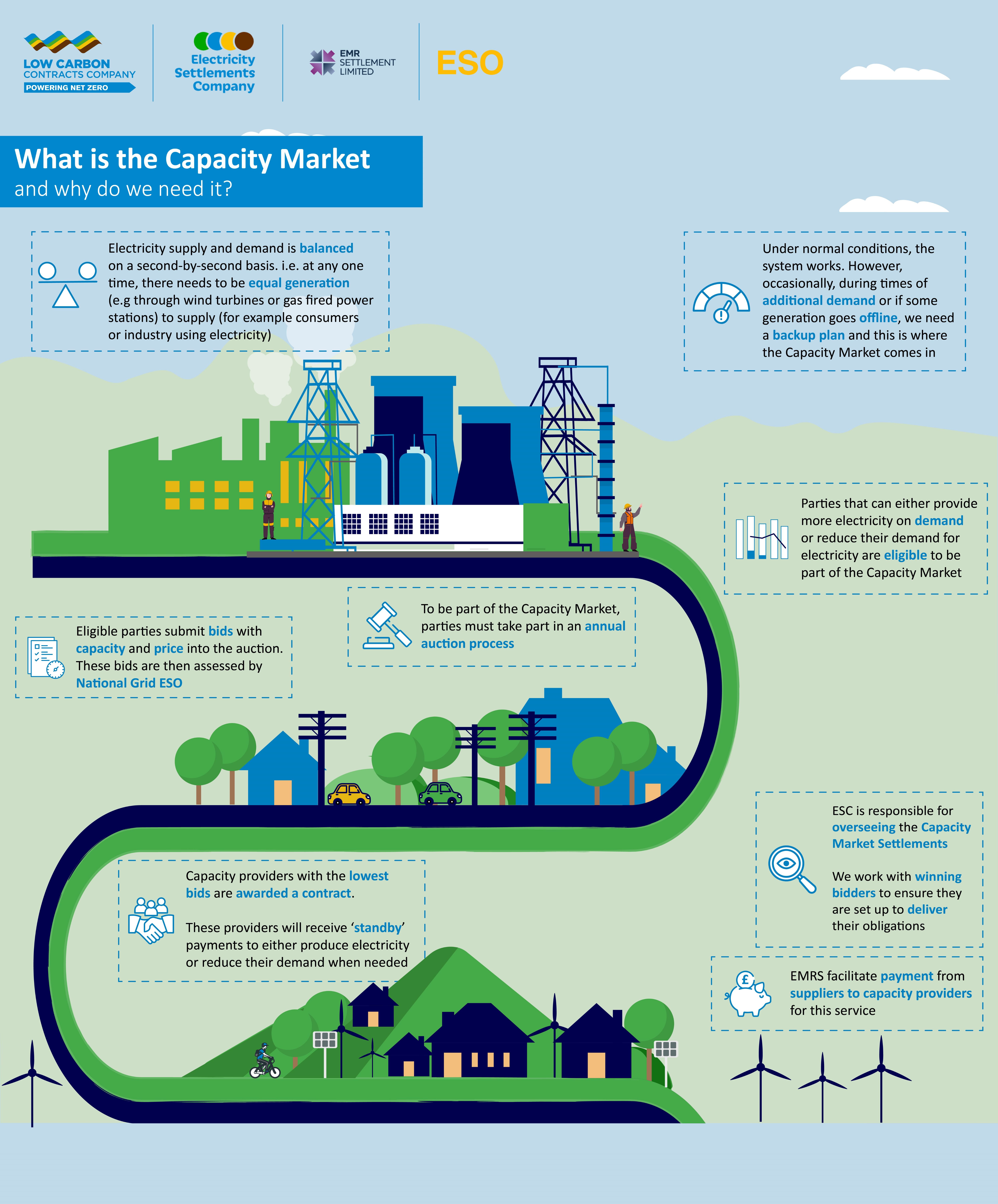
The role of auctions in the Capacity Market
The scheme runs two auctions to procure capacity for each Delivery Year. The first auction is held four years ahead of the delivery year (T-4 auction), to allow enough time to build any new capacity needed. As much as 95% of the expected capacity is procured at this stage. To make sure the auction doesn’t procure too much, the Electricity System Operator provides estimates of peak demand and the amount of extra capacity needed.
Then, a year before delivery, a ‘top-up’ auction is run (T-1 auction). This allows any last-minute adjustments to be made, as it is impossible to accurately predict peak demand four years in advance. It also recognises that some of the new Capacity Providers which signed up in the first auction might be unable to deliver and need to be replaced at this stage.
Staging the auction in two phases helps to ensure the Capacity Market doesn’t build more new capacity than needed. Allowing existing and new power stations to bid also makes it clear how much existing capacity is available.
For more detailed information about the auctions and to access the Auction Results, please visit the National Energy System Operator (NESO) website.
What is a System Stress Event?
A System Stress Event occurs when the electricity network is under significant pressure, potentially due to unexpected generation shortfalls or demand spikes (for example, during extreme weather conditions). Such events increase the risk of supply shortages, which could lead to outages, if not managed effectively.
Capacity Market Notices
A Capacity Market Notice (CMN) is one of the first indications that a Capacity Market Stress Event may be about to occur. The National Systems Operator (NESO) issues CMNs to alert Capacity Providers about potential shortfalls. CMNs are generated automatically and issued at least four hours before a System Stress Event is expected to occur, serving as an early warning that available generation might not meet the forecasted national demand. Capacity Market Notices are sent directly to Capacity Providers and communicated through the dedicated website: gbcmn.nationalenergyso.com and sent out via email alerts.
Obligations During a System Stress Event
During a System Stress Event, Capacity Providers must deliver the capacity they committed to providing in their agreement – known as the Capacity Obligation. This requirement is essential for maintaining system stability.
Capacity Providers that fail to deliver sufficient Metered Volumes to meet their Capacity Obligation during a System Stress Event may be required to pay a penalty. The purpose of the penalties is to incentivise Capacity Providers to ensure they are able to meet their obligations when called upon.
Ensuring a Reliable Electricity Supply
This structured approach, including staged auctions, defined delivery periods, delivery assurance processes and mechanisms to manage system stress, ensures the Capacity Market functions effectively.
It not only secures the UK's electricity supply but also offers energy providers a transparent framework for participation.
Quick Links
Contact Us
For enquiries or to speak to a member of the team, please fill in the contact form and we'll get back to you as soon as possible.
FAQs
View all frequently asked questions and our responses for our schemes and other resources.